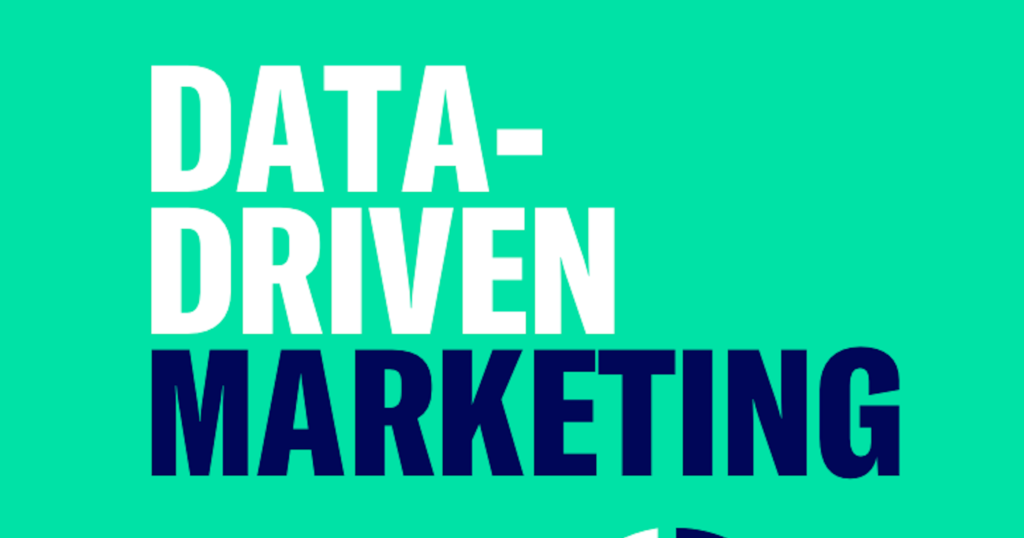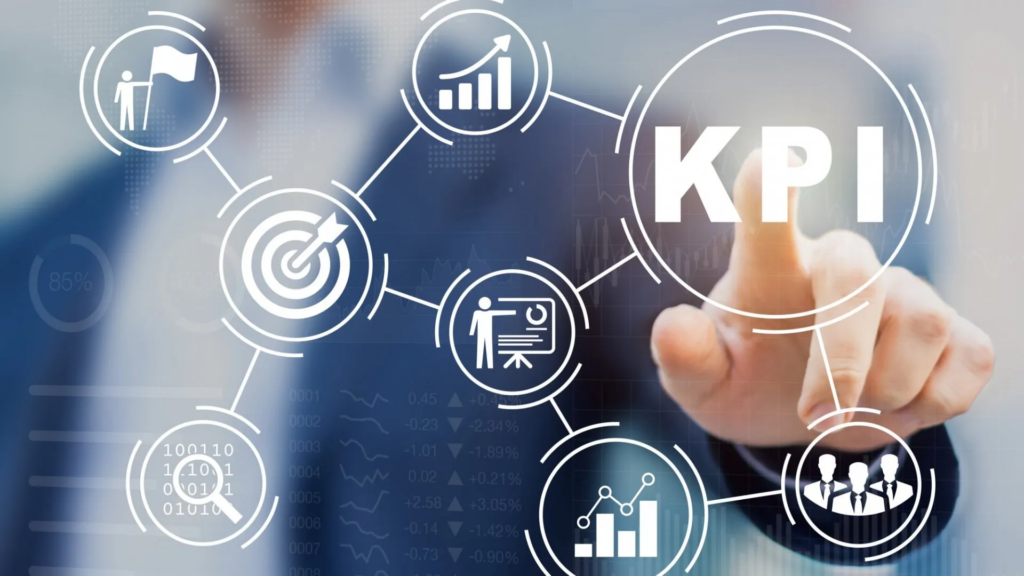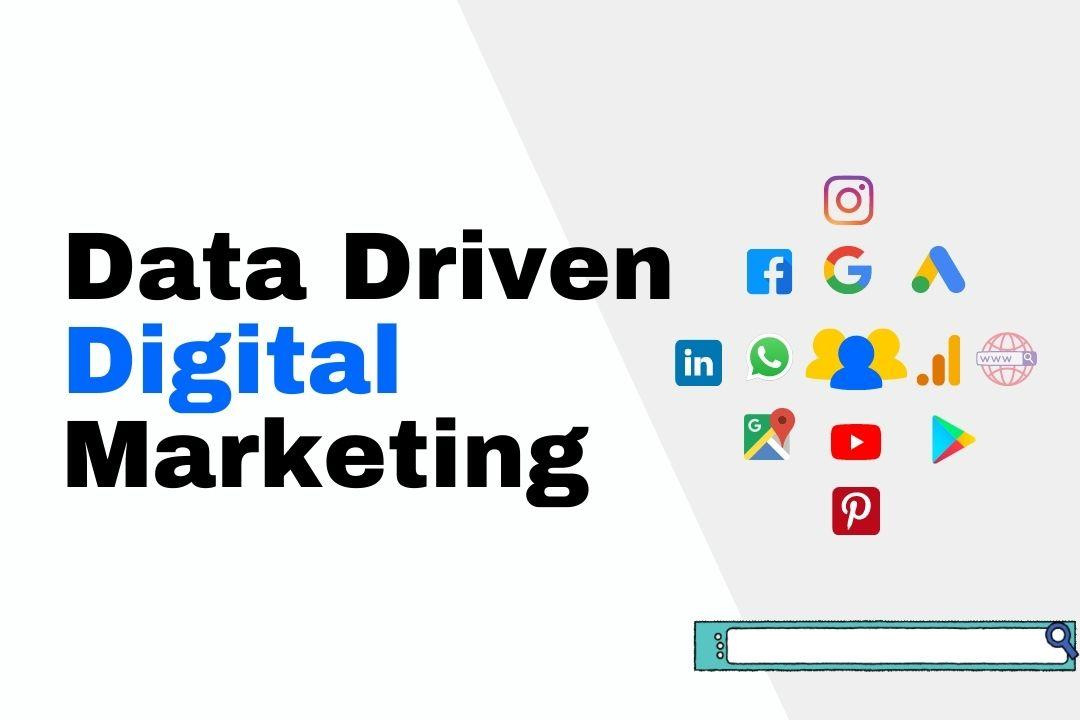A data-driven digital marketing strategy helps businesses optimize their marketing efforts by making informed decisions based on real-time data. By leveraging analytics, customer insights, and performance metrics, businesses can increase engagement, drive conversions, and achieve long-term success.
1. Understand Your Target Audience

A successful digital marketing strategy begins with a deep understanding of your audience. Key steps include:
- Market Research: Use surveys, social media insights, and customer feedback to gather data.
- Buyer Personas: Create detailed customer profiles based on demographics, behavior, and preferences.
- Customer Journey Mapping: Identify touchpoints where users interact with your brand.
2. Set SMART Marketing Goals
Setting Specific, Measurable, Achievable, Relevant, and Time-bound (SMART) goals helps track progress. Examples include:
- Increase website traffic by 30% in six months.
- Generate 500 new leads through email marketing within three months.
- Boost social media engagement by 25% in one quarter.
3. Utilize Data Analytics Tools
Using the right tools allows you to track performance and measure results. Popular analytics tools include:
- Google Analytics: Tracks website traffic, user behavior, and conversion rates.
- Google Search Console: Monitors search performance and keyword rankings.
- CRM Software (HubSpot, Salesforce): Helps manage customer interactions and sales data.
- Social Media Analytics (Facebook Insights, Twitter Analytics): Measures engagement, reach, and audience demographics.
4. Leverage SEO for Organic Growth

Search Engine Optimization (SEO) enhances visibility in search results. Best practices include:
- Keyword Research: Use tools like Ahrefs or SEMrush to identify high-ranking keywords.
- On-Page Optimization: Optimize meta titles, descriptions, and headings.
- Quality Content: Publish valuable blog posts, guides, and case studies.
- Technical SEO: Improve website speed, mobile-friendliness, and structured data.
5. Personalize Content for Better Engagement
Personalized content improves customer experience and conversion rates. Methods include:
- Dynamic Email Campaigns: Use personalized subject lines and recommendations.
- Website Customization: Show personalized product recommendations based on browsing history.
- Retargeting Ads: Display ads to users who previously interacted with your site.
6. Implement Data-Driven Paid Advertising
Paid advertising ensures targeted reach and improved ROI. Strategies include:
- PPC Campaigns: Use Google Ads and Bing Ads for search and display advertising.
- Social Media Ads: Run targeted campaigns on Facebook, Instagram, LinkedIn, and Twitter.
- A/B Testing: Test different ad creatives, CTAs, and landing pages to optimize performance.
7. Optimize Email Marketing Campaigns
Email marketing remains a high-ROI channel when executed strategically. Tips include:
- Segment Your Audience: Categorize subscribers based on behavior and interests.
- Automate Workflows: Use email automation to nurture leads and follow up.
- Monitor Open and Click Rates: Optimize subject lines and CTAs for higher engagement.
8. Monitor Key Performance Indicators (KPIs)

Tracking KPIs helps measure success and identify areas for improvement. Important KPIs include:
- Website Traffic & Bounce Rate
- Lead Conversion Rate
- Customer Acquisition Cost (CAC)
- Return on Investment (ROI)
- Engagement Rate on Social Media
9. Continuously Test and Optimize
Data-driven marketing requires continuous testing and refinement. Best practices include:
- A/B Testing: Compare different versions of landing pages, emails, and ads.
- Heatmaps & User Behavior Analysis: Use tools like Hotjar to analyze user interactions.
- Performance Reports: Regularly review data insights and adjust strategies accordingly.
10. Leverage AI and Machine Learning for Automation
AI-powered tools enhance data-driven marketing by automating processes and improving accuracy. Examples include:
- Chatbots: Provide real-time customer support and engagement.
- Predictive Analytics: Use AI to forecast customer behavior and trends.
- Automated Content Recommendations: Improve personalization with AI-driven content suggestions.
Also Read : Top Affiliate Marketing Strategies To Maximize Your Earnings
Conclusion
A data-driven digital marketing strategy empowers businesses to make informed decisions, maximize ROI, and enhance customer engagement. By leveraging analytics, SEO, personalized content, and AI-driven automation, brands can achieve long-term marketing success.
FAQs
1. Why is a data-driven marketing strategy important?
It helps businesses make informed decisions, optimize resources, and improve customer targeting for higher conversions.
2. What tools are essential for data-driven digital marketing?
Google Analytics, SEMrush, HubSpot, Facebook Insights, and CRM platforms are essential for tracking and analyzing data.
3. How does SEO contribute to a data-driven marketing strategy?
SEO improves organic visibility, drives traffic, and enhances user experience through data-backed optimization techniques.
4. What role does AI play in digital marketing?
AI automates processes, enhances personalization, and provides predictive insights for better decision-making.
5. How can I measure the success of my digital marketing strategy?
Monitor key KPIs such as website traffic, conversion rates, CAC, ROI, and engagement metrics.

